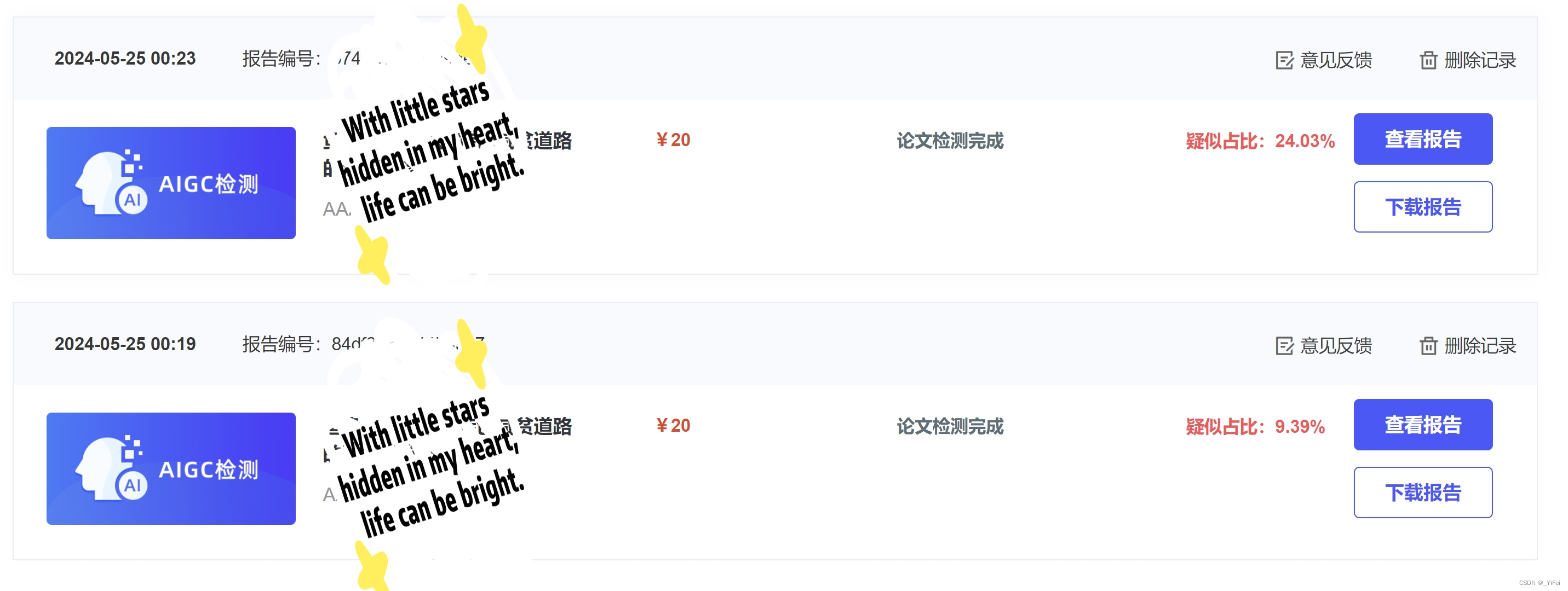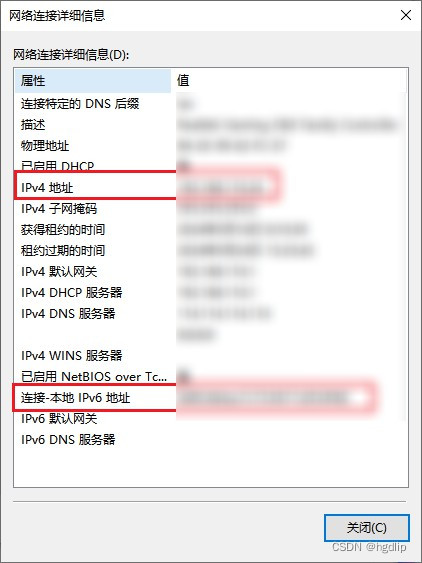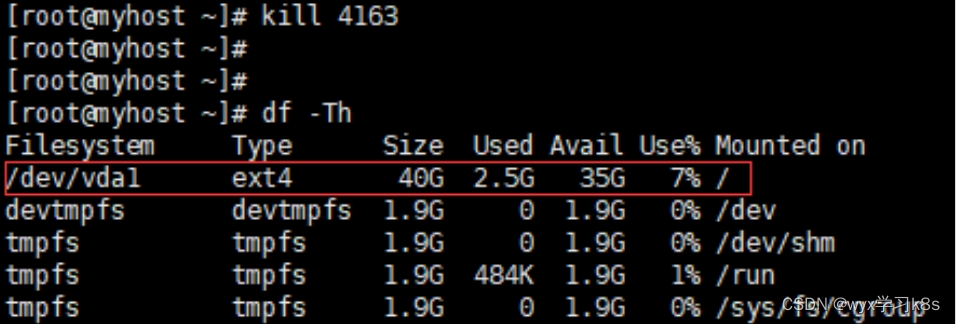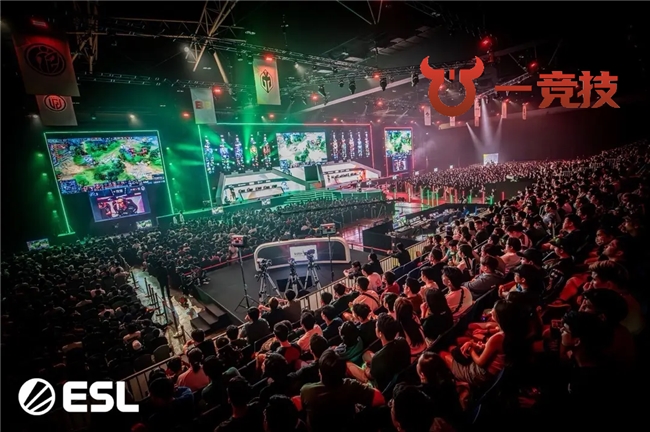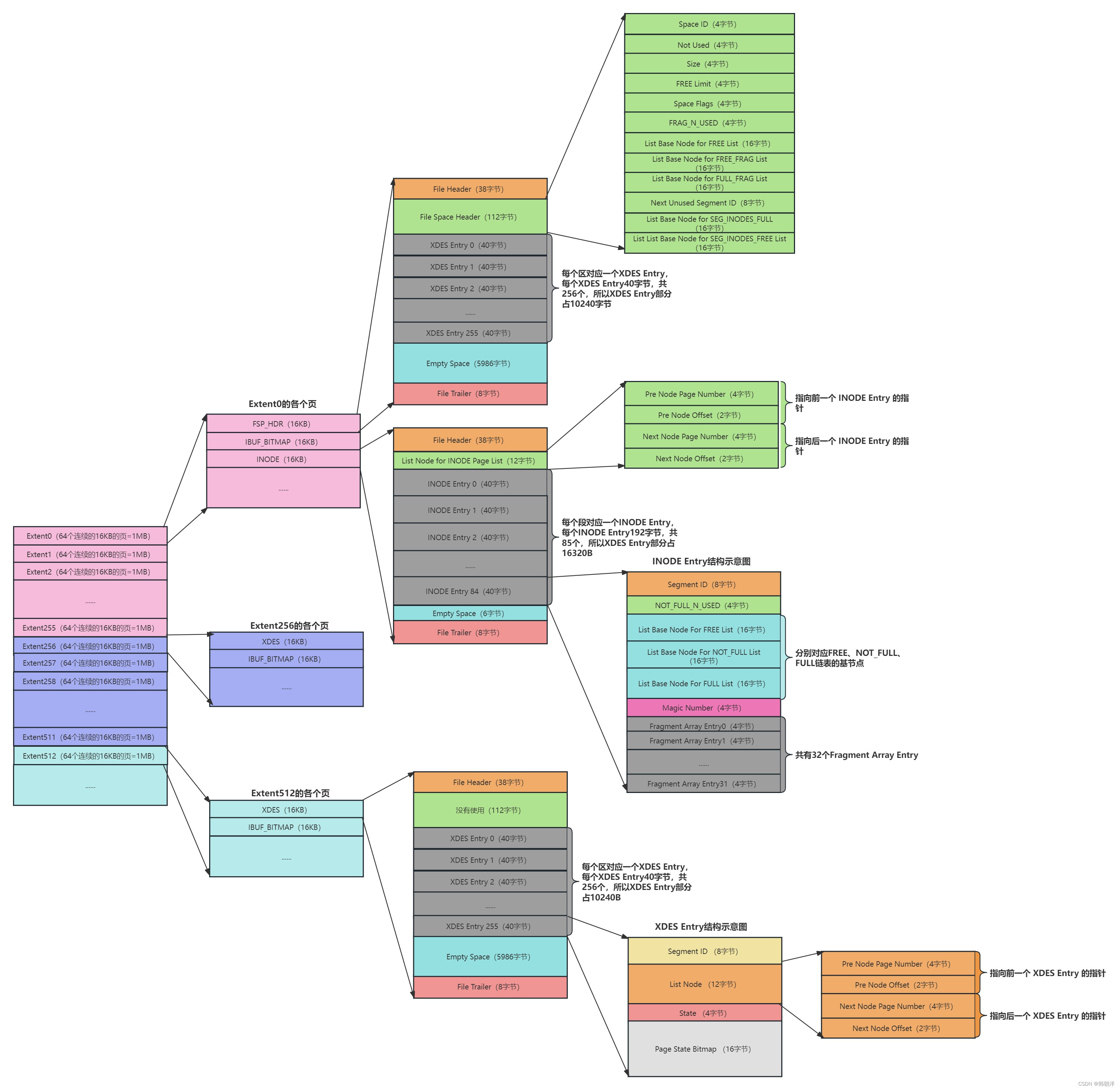TabView提供了一个交互式界面,允许用户在其内部的子界面间自由的切换,TabView有两种显示模式,一个是DefaultTabViewStyle,另一个是PageTabViewStyle,本文将对DefaultTabViewStyle这种类型的基本使用和外观样式设置进行一下探索学习。
基本使用
DefaultTabViewStyle类型下的TabView就像我们在UIKit中用到的UITabViewController,可以作为构建App的一个基本根视图。
要创建带有Tab选项卡的用户界面,在TabView中添加视图,并对每个视图添加tabItem(_:)修饰符即可,比如下面这个简单的示例:

上面代码中,我们在TabView中添加了3个视图,并且给每个视图都添加了tabItem(_:)修饰符,该修饰符的闭包内支持传入一个Label组件或者Text组件加Image的组合方式。
不管是哪种方式都不支持外观的设置。如果用Text和Image组合的方式,添加了除了这两个组件以外的组件,那也是没用的,系统只会认添加的第一个Text和第一个Image,其他的都忽略了。
另外可以添加.badge()修饰符,传入一个字符串,如下:
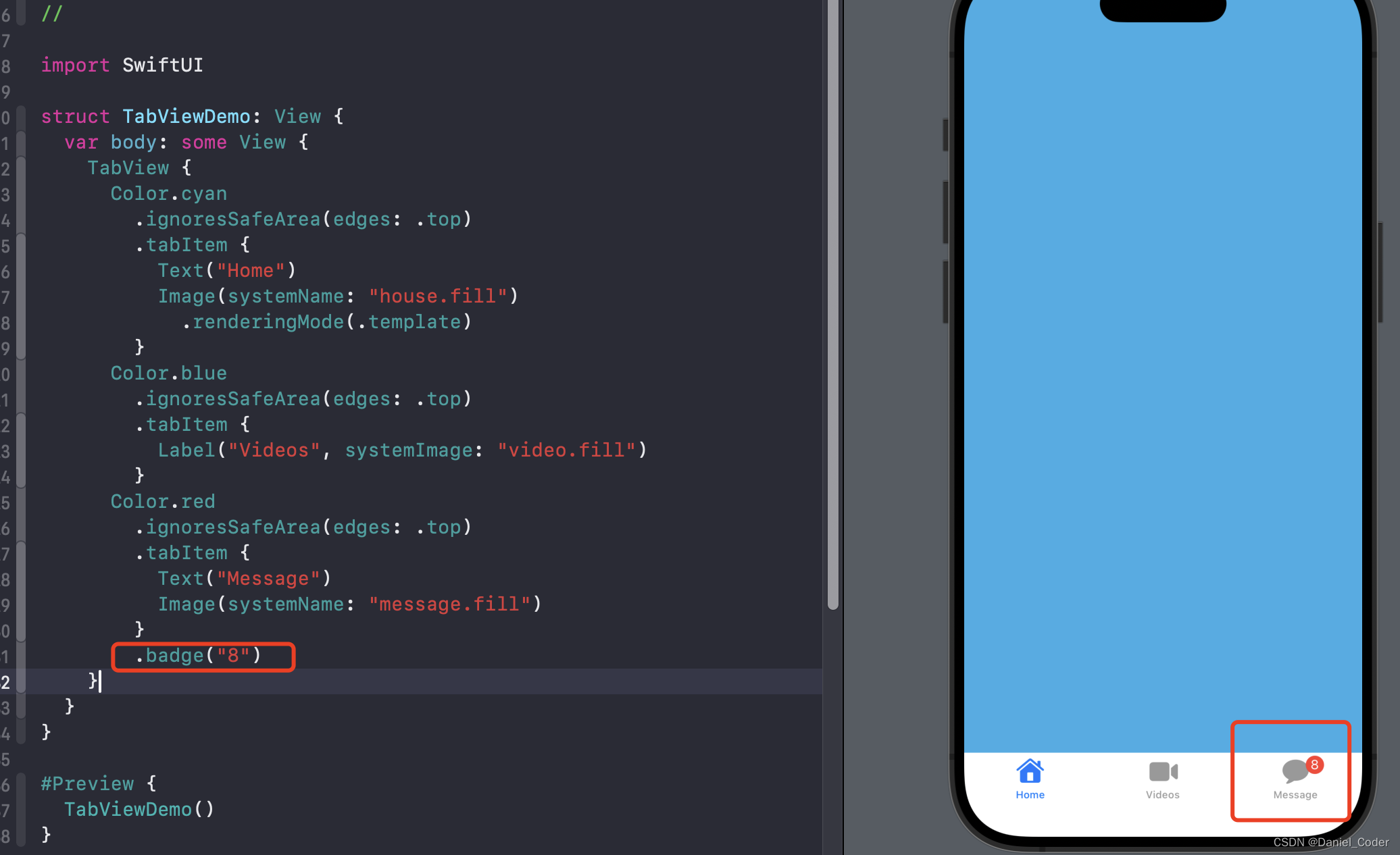
默认badge是红色背景白色文字。
在创建TabView的时候还支持传入一个selection值,用来记录当前选中的tab,当切换tab的时候,selection读取每个子界面的tag值。下面将代码加入tag,并将代码进行一下优化,首先定义一个TabType枚举,定义好要显示的界面,包括界面的文字和图标。
enum TabType: Int, Hashable {
case home
case videos
case message
var title: String {
switch self {
case .home:
return "Home"
case .videos:
return "Videos"
case .message:
return "Message"
}
}
var image: String {
switch self {
case .home:
return "house.fill"
case .videos:
return "video.fill"
case .message:
return "message.fill"
}
}
}
有了这个后body的代码优化为:
@State private var selectedTab: TabType = .home
var body: some View {
TabView(selection: $selectedTab) {
HomeView(selectedTab: $selectedTab)
.tabItem {
Text(TabType.home.title)
Image(systemName: TabType.home.image)
}
.tag(TabType.home)
VideosView()
.tabItem {
Label(TabType.home.title, systemImage: TabType.home.image)
}
.tag(TabType.videos)
MessageView()
.tabItem {
Text(TabType.home.title)
Image(systemName: TabType.home.image)
}
.badge("8")
.tag(TabType.message)
}
}
上面定义了TabType类型的selectedTab属性,默认值是.home,即默认显示Home界面。我们将selectedTab绑定到TabView中,并对每个子界面添加.tag()修饰符,传入对应的tag,这里的tag采用枚举自身的值。
界面切换只要改变selectedTab的值即可,在Home界面添加了一个Button,点击后跳转到Message界面,Home界面作为一个单独的界面,定义如下:
struct HomeView: View {
@Binding var selectedTab: TabType
var body: some View {
ZStack {
Color.cyan
.ignoresSafeArea(edges: .top)
Button(action: {
selectedTab = TabType.message
}, label: {
Text("Go to Message page")
.padding()
.background(Color.red)
.foregroundColor(.white)
.clipShape(Capsule())
})
}
}
}
Home界面定义了一个@Bingding修饰的selectedTab变量,用来绑定父界面的selectedTab变量,这样在Home界面改动selectedTab变量,父界面的selectedTab也会改变。
效果图如下:

样式设置
与之前的UIKit TabBar类似,选中的Tab默认为蓝色,而未选中的为灰色。另外,在UIKit中,整个标签栏默认有一个背景。
然而,如果想改变颜色来匹配我们自己App的主题,例如,选中是Tab的文字和图片是其他颜色,以及badge的背景色和颜色等等。
下面我们将使用的UIKit外观API,来设置TabView的外观样式,让我们看看下面的代码。
先说一下,给TabView组件添加.tint()修饰符,可以改变TabItem选中时的颜色,其他的就得靠UIKit的API了。
设置选中的TabItem的颜色
.tint(Color.red) // 设置选中的tabitem的颜色。
设置未选中的TabItem的颜色
UITabBar.appearance().unselectedItemTintColor = .systemBrown
设置badge的背景色
UITabBarItem.appearance().badgeColor = .green
设置badge中文字的样式
UITabBarItem.appearance().setBadgeTextAttributes([.foregroundColor: UIColor.red, .font: UIFont.boldSystemFont(ofSize: 14)], for: .normal) // 未选中时
UITabBarItem.appearance().setBadgeTextAttributes([.foregroundColor: UIColor.blue], for: .selected) // 选中时
设置TabBar的背景色
UITabBar.appearance().backgroundColor = .yellow
设置TabItem中文字和图片的间距和偏移量
UITabBarItem.appearance().titlePositionAdjustment = UIOffset(horizontal: 0, vertical: 5)
上面的这些设置,我们可以在初始化组件的时候设置,也可以在.onAppear中设置。
.onAppear {
UITabBar.appearance().unselectedItemTintColor = .systemBrown
UITabBarItem.appearance().badgeColor = .green
UITabBar.appearance().backgroundColor = .yellow
UITabBarItem.appearance().titlePositionAdjustment = UIOffset(horizontal: 0, vertical: 5)
UITabBarItem.appearance().setBadgeTextAttributes([.foregroundColor: UIColor.red, .font: UIFont.boldSystemFont(ofSize: 14)], for: .normal)
UITabBarItem.appearance().setBadgeTextAttributes([.foregroundColor: UIColor.blue], for: .selected)
}

写在最后
以上就是TabView的基本用法及样式设置,希望对大家能有所帮助,下一篇文章继续看一下PageTabViewStyle样式下的TabView。
最后,希望能够帮助到有需要的朋友,如果您觉得有帮助,还望点个赞,添加个关注,笔者也会不断地努力,写出更多更好用的文章。
完整Demo代码如下:
import SwiftUI
enum TabType: Int, Hashable {
case home
case videos
case message
var title: String {
switch self {
case .home:
return "Home"
case .videos:
return "Videos"
case .message:
return "Message"
}
}
var image: String {
switch self {
case .home:
return "house.fill"
case .videos:
return "video.fill"
case .message:
return "message.fill"
}
}
}
struct TabViewDemo: View {
@State private var selectedTab: TabType = .home
var body: some View {
TabView(selection: $selectedTab) {
HomeView(selectedTab: $selectedTab)
.tabItem {
Text(TabType.home.title)
Image(systemName: TabType.home.image)
}
.tag(TabType.home)
VideosView()
.tabItem {
Label(TabType.home.title, systemImage: TabType.home.image)
}
.tag(TabType.videos)
MessageView()
.tabItem {
Text(TabType.home.title)
Image(systemName: TabType.home.image)
}
.badge("8")
.tag(TabType.message)
}
.tint(Color.red)
.onAppear {
UITabBar.appearance().unselectedItemTintColor = .systemBrown
UITabBarItem.appearance().badgeColor = .green
UITabBar.appearance().backgroundColor = .yellow
UITabBarItem.appearance().titlePositionAdjustment = UIOffset(horizontal: 0, vertical: 5)
UITabBarItem.appearance().setBadgeTextAttributes([.foregroundColor: UIColor.red, .font: UIFont.boldSystemFont(ofSize: 14)], for: .normal)
UITabBarItem.appearance().setBadgeTextAttributes([.foregroundColor: UIColor.blue], for: .selected)
}
}
}
#Preview {
TabViewDemo()
}
struct HomeView: View {
@Binding var selectedTab: TabType
var body: some View {
ZStack {
Color.cyan
.ignoresSafeArea(edges: .top)
Button(action: {
selectedTab = TabType.message
}, label: {
Text("Go to Message page")
.padding()
.background(Color.red)
.foregroundColor(.white)
.clipShape(Capsule())
})
}
}
}
struct VideosView: View {
var body: some View {
ZStack {
Color.blue
.ignoresSafeArea(edges: .top)
}
}
}
struct MessageView: View {
var body: some View {
ZStack {
Color.red
.ignoresSafeArea(edges: .top)
}
}
}
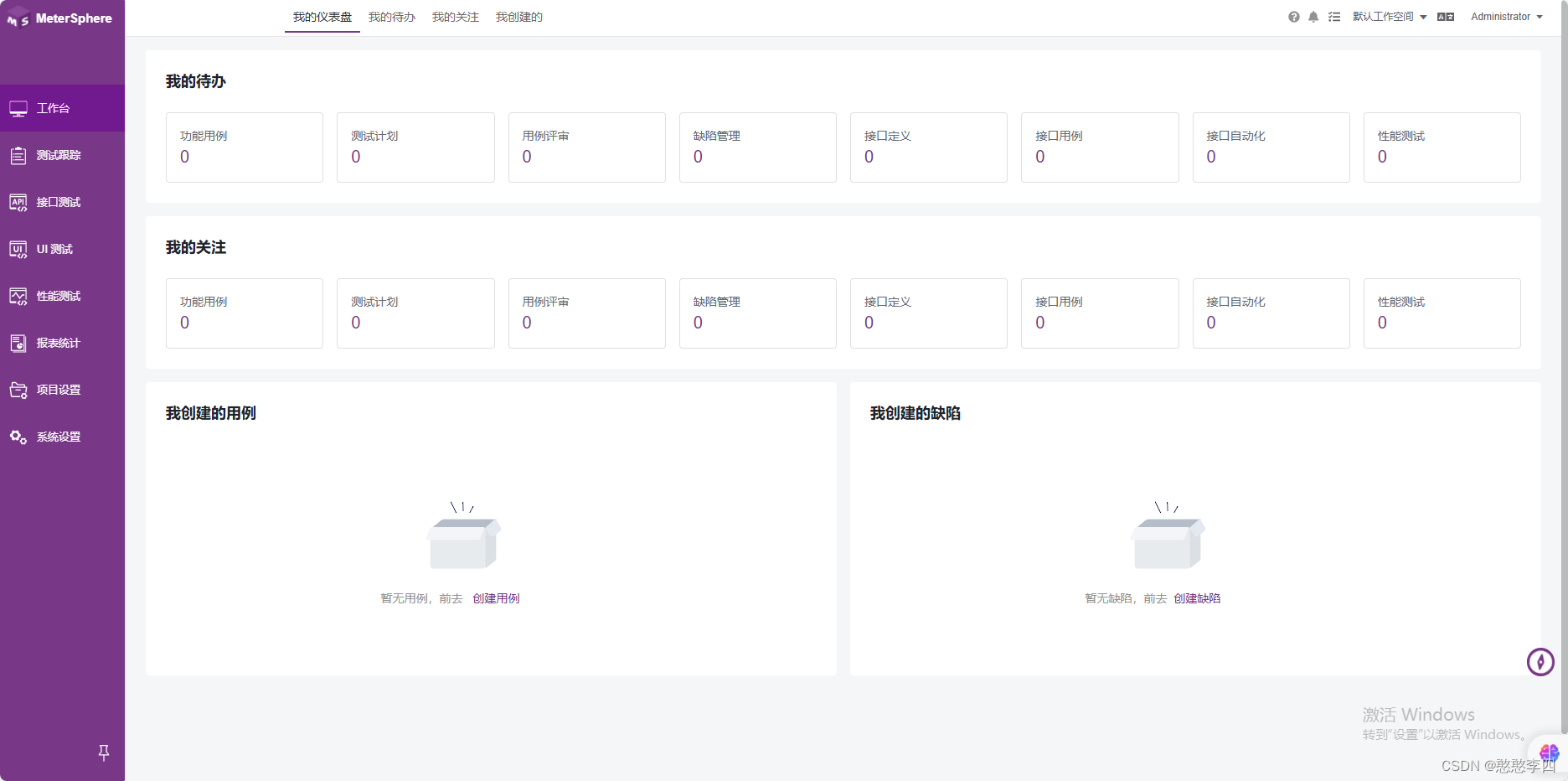
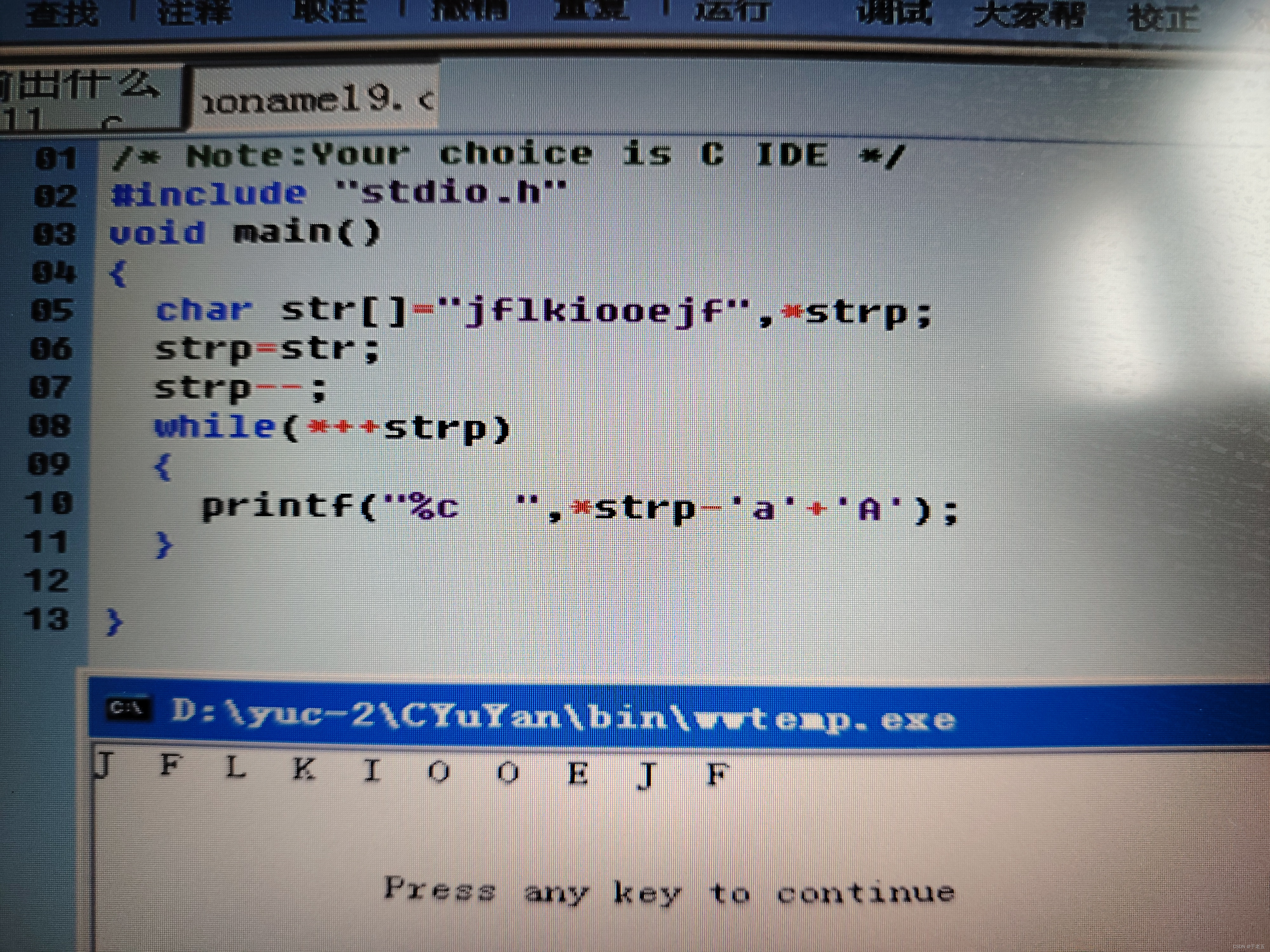

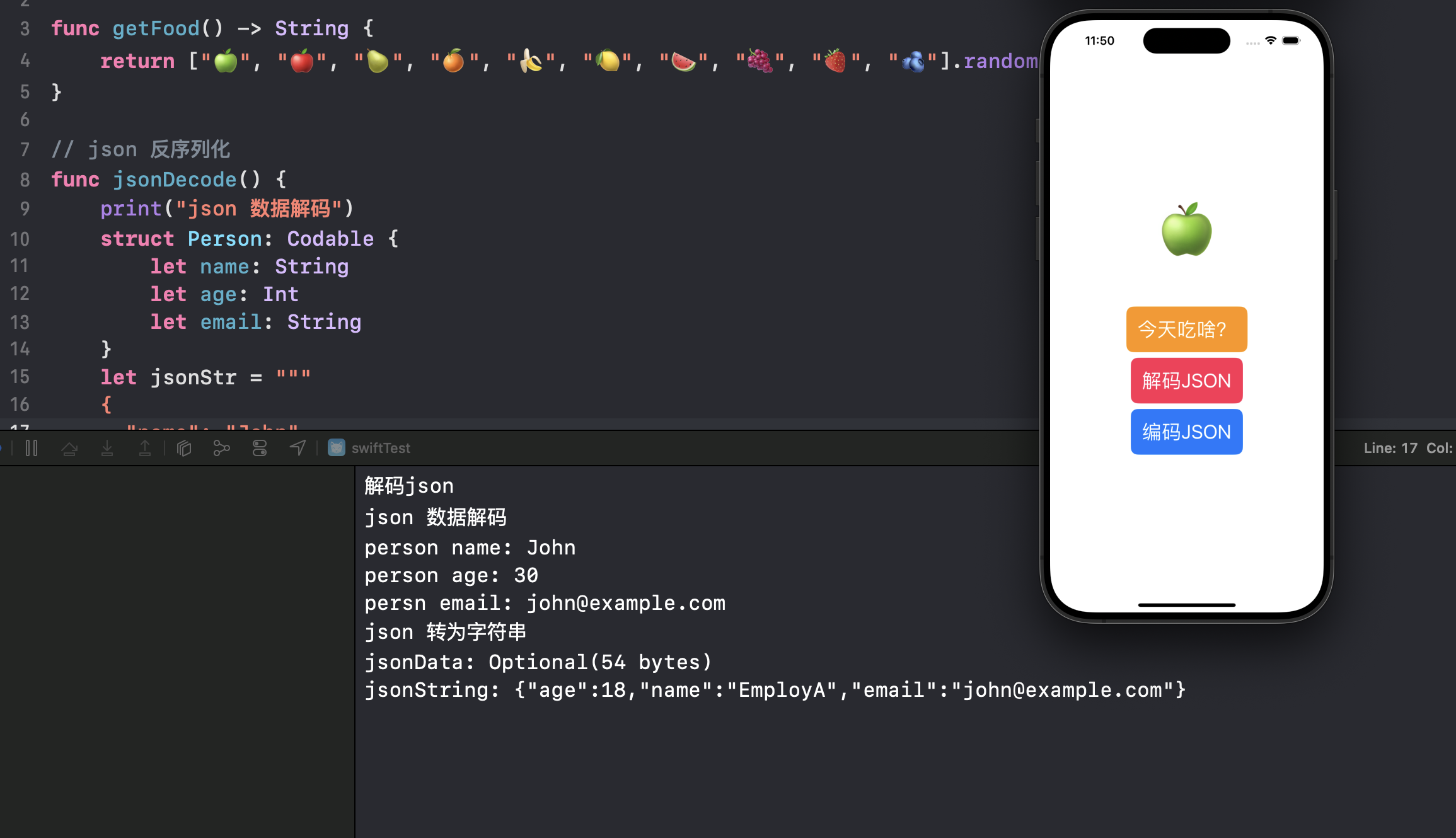

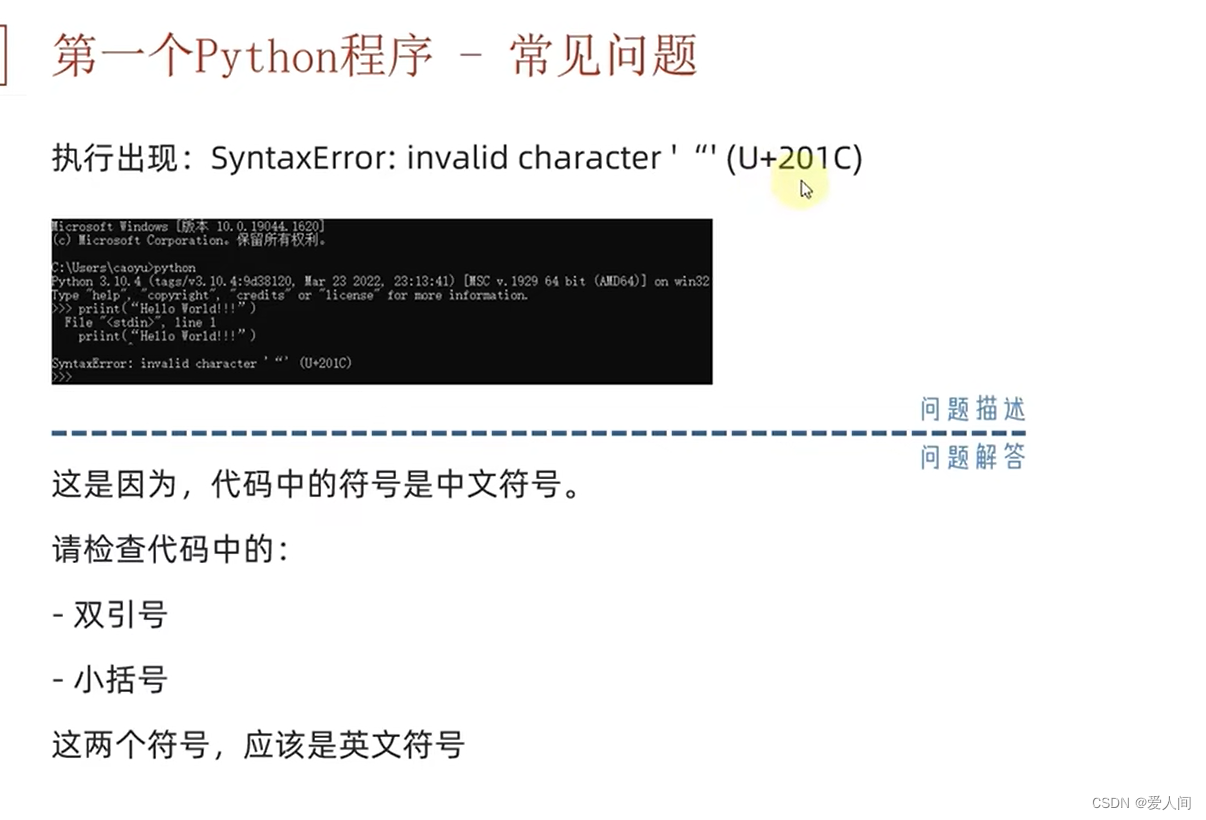




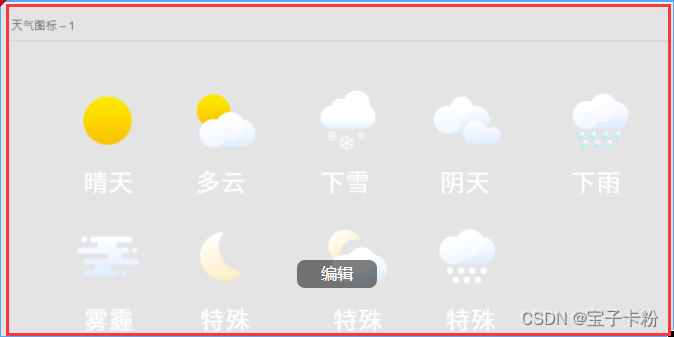
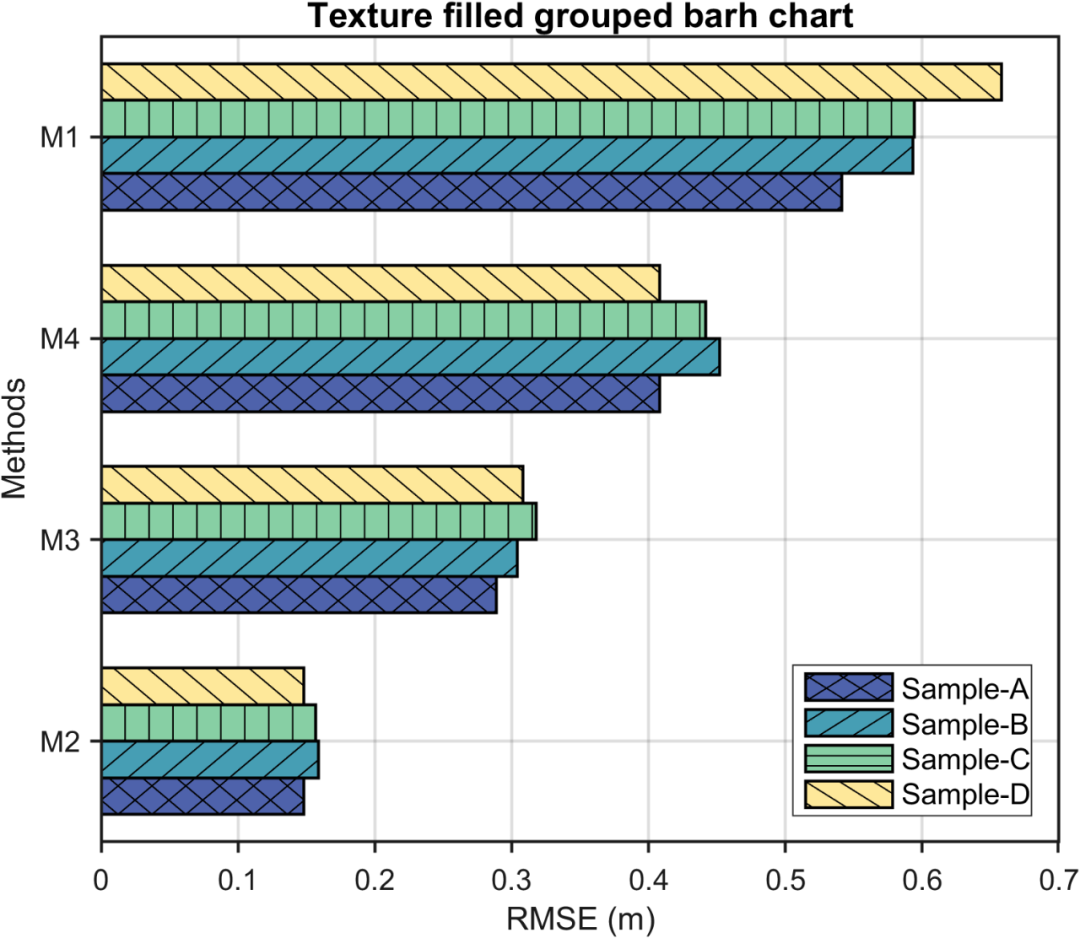
![buu[HCTF 2018]WarmUp(代码审计)](https://img-blog.csdnimg.cn/direct/01f80e3705d64460981b57a0e1829323.png#pic_center)

